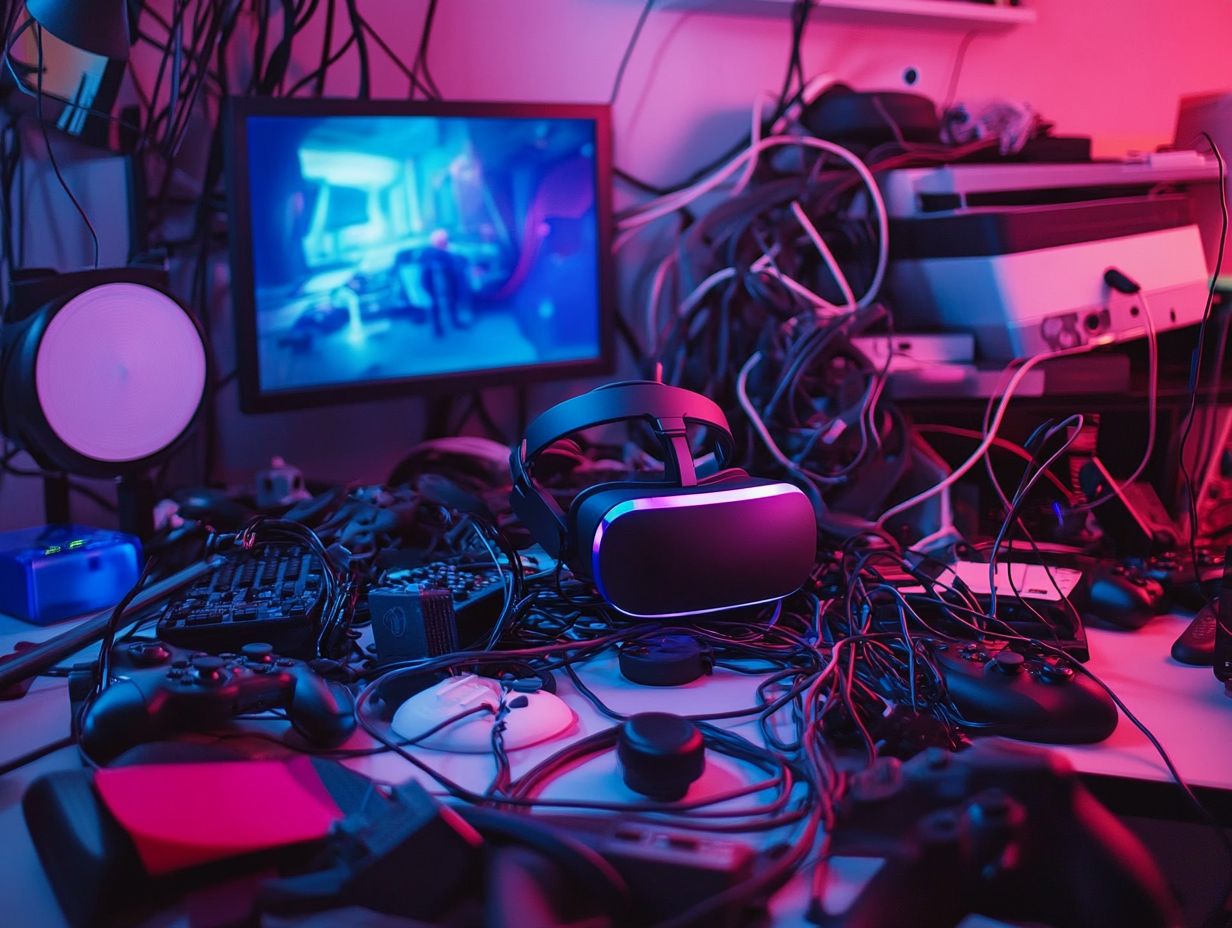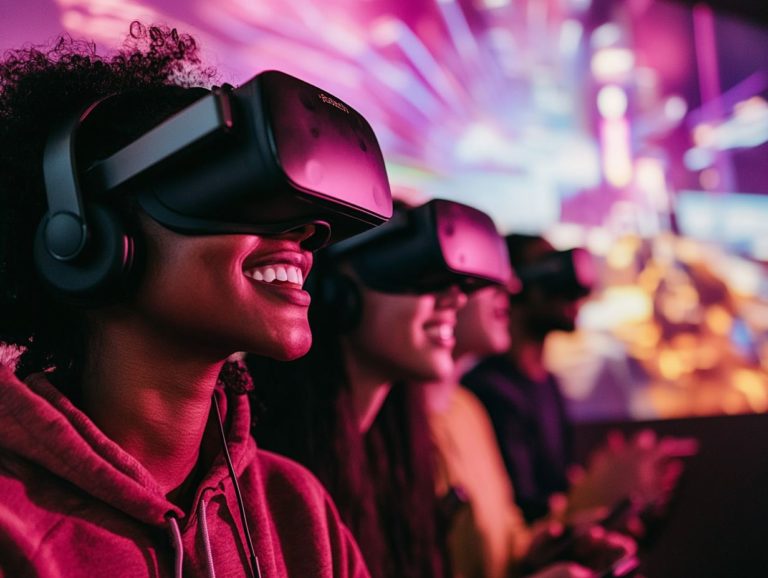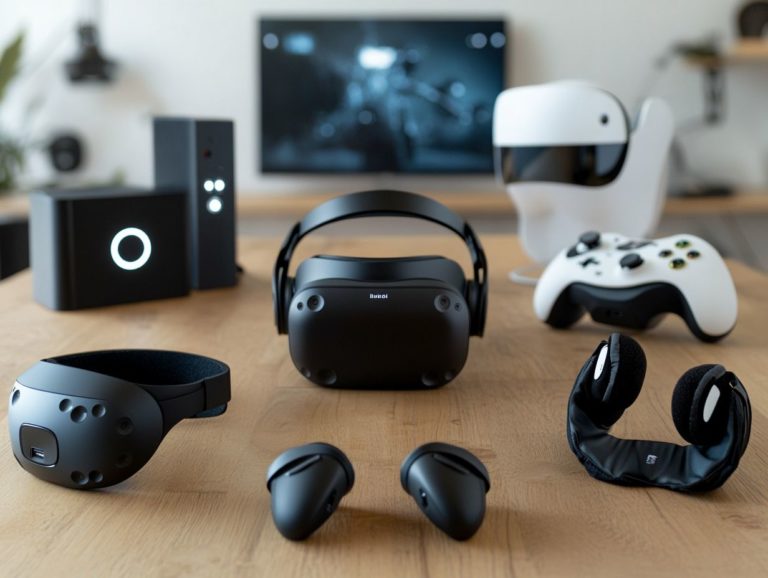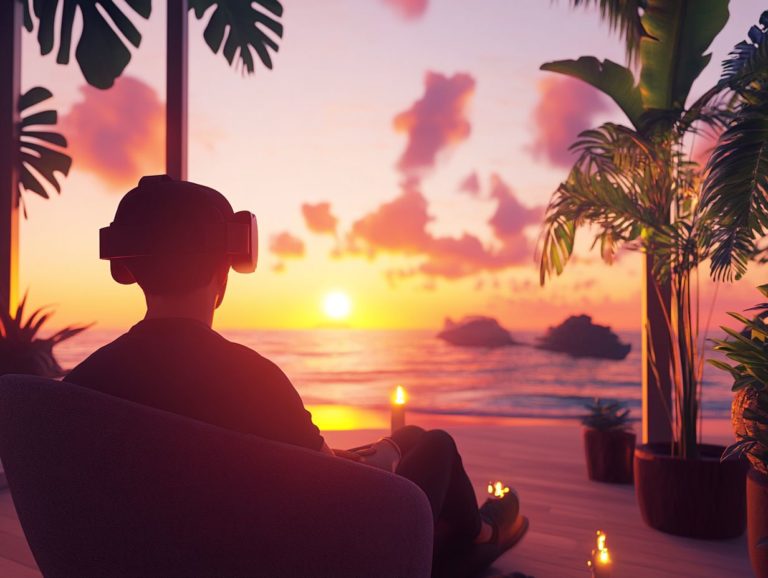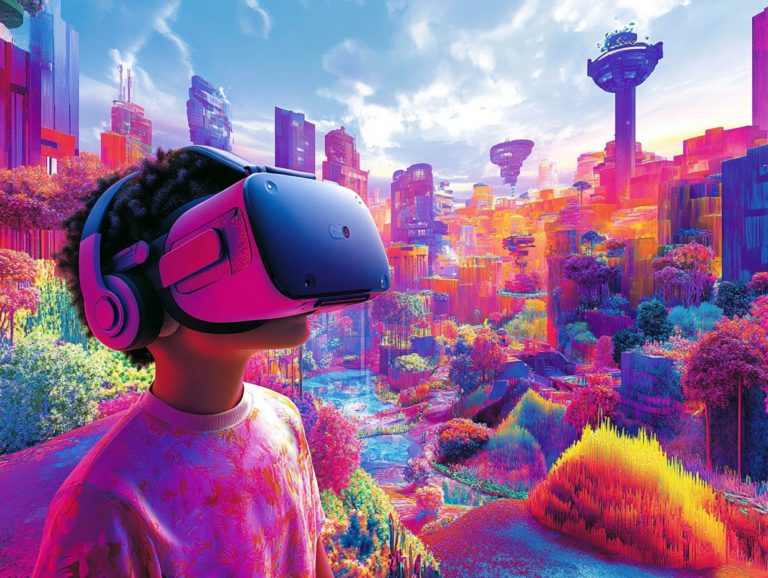5 vr setup mistakes to avoid
In the realm of virtual reality, an immersive experience can swiftly transform into a frustrating ordeal if your setup isn t quite right.
From inadequate space for movement to poor lighting and improper calibration of your VR headset, even minor oversights can greatly diminish your enjoyment. Let s explore five common VR setup mistakes you must avoid and emphasize key components that will elevate your gaming experience.
You ll also find tips on optimizing your play area, ensuring comfort and safety, and troubleshooting any audio issues you might encounter.
Prepare to take your virtual adventures to new heights!
Contents
- Key Takeaways:
- 1. Not Having Enough Space for Movement
- 2. Poor Lighting or Glare in the Play Area
- 3. Not Calibrating the VR Headset Properly
- 4. Not Considering Comfort and Safety
- 5. Not Having Proper Audio Setup
- What Are the Essential Components of a VR Setup?
- Frequently Asked Questions
- What are the top 5 VR setup mistakes to avoid?
- How does incorrect room lighting affect VR setup?
- Why is proper placement of sensors important in VR setup?
- What is IPD and Why is it Important in VR Setup?
- Why is Headset Calibration Necessary in VR Setup?
- How Often Should I Update Software and Drivers for My VR Setup?
- Importance of Proper Sensor Placement
Key Takeaways:
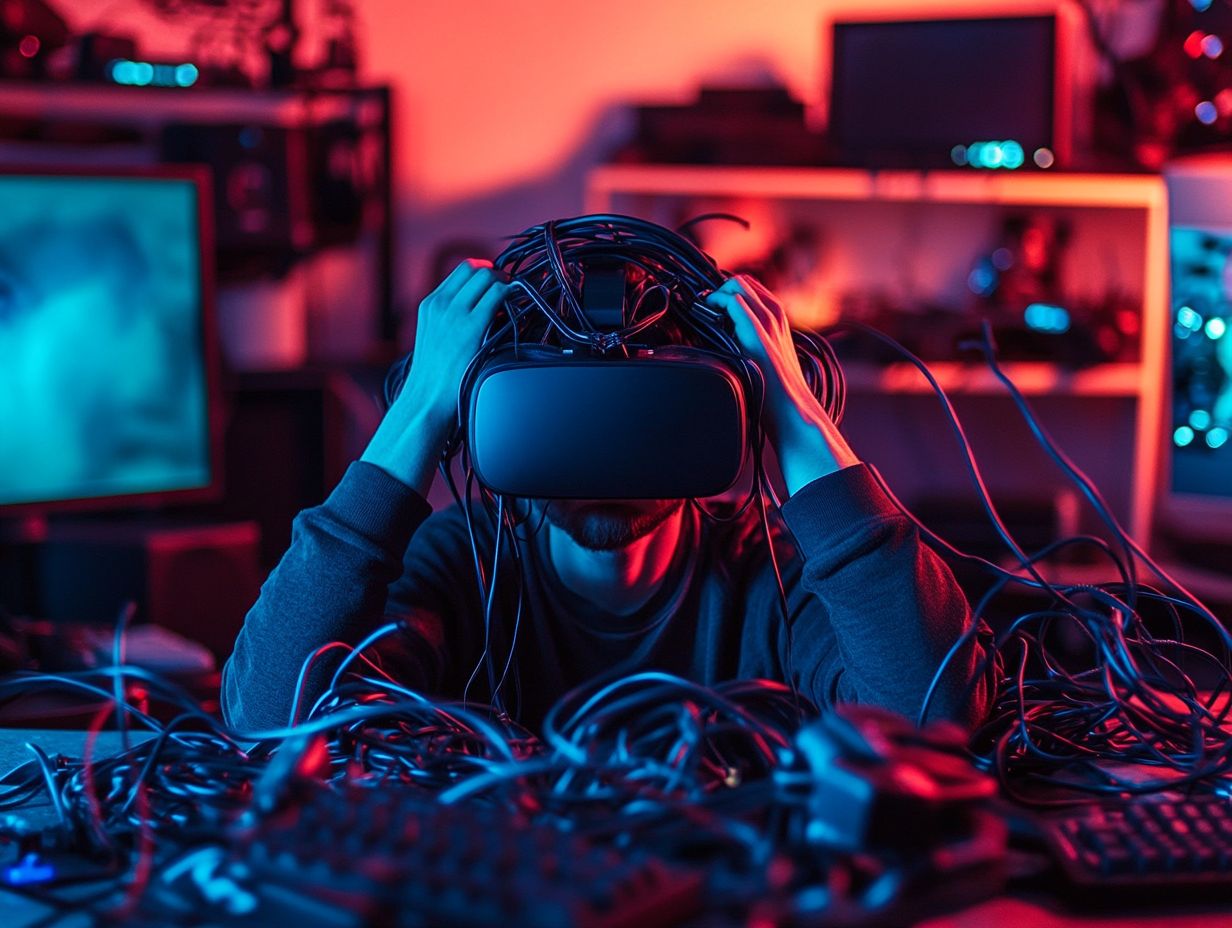
Ensure you have enough space to move freely.
Good lighting can significantly enhance your VR experience.
Properly calibrate your VR headset to avoid discomfort and improve gameplay.
1. Not Having Enough Space for Movement
In the realm of virtual reality (VR), lacking adequate space for movement can significantly diminish your user experience and the effectiveness of immersive learning environments.
A cramped setting restricts your ability to interact fully with VR objects. This reduces the realism and interactivity that s crucial for effective training.
Providing ample space allows you to mimic physical movements and engage more profoundly with the content. When evaluating space requirements, consider both the physical area available and the specific types of VR experiences you plan to engage in.
Some applications may require considerable room for walking or gesturing. A straightforward assessment, such as measuring your movement patterns, can help you determine the necessary dimensions for optimized immersive experiences.
Ultimately, having enough space boosts your performance and leads to a more enriching VR journey.
2. Poor Lighting or Glare in the Play Area
Poor lighting or glare in your VR play area can seriously undermine the immersive experience, impacting both user satisfaction and training outcomes.
When you dive into virtual reality training, the right lighting can be a game-changer. Properly optimized light sources create a visually appealing environment that enhances focus and minimizes distractions.
Consider these lighting strategies:
- Soft, diffused lighting works wonders in environments where intricate details matter.
- Evenly distributed ambient light is ideal for action-packed training tasks.
Using adjustable LED lights ensures consistent illumination as you move around, keeping your virtual surroundings engaging and realistic. Paying attention to your lighting setup can significantly boost the overall effectiveness of the various VR tools at your disposal.
3. Not Calibrating the VR Headset Properly
Failure to calibrate your VR headset can lead to challenges that undermine your training performance and create a frustrating experience.
This calibration is critical in immersive environments where the precision of movement tracking directly influences realism and engagement.
When your VR headset isn t calibrated correctly, you may encounter frustrating mismatches between your physical movements and the virtual responses. This results in disorientation and a loss of immersion.
To ensure accurate training metrics, it s essential to understand the specific calibration methods required for your headset model. This includes:
- Adjusting the space between your eyes.
- Fine-tuning the lens and headset positioning.
- Calibrating motion tracking to fit your unique space.
Mastering these adjustments ultimately enhances both your performance and satisfaction during training sessions.
Start optimizing your VR setup today for an unforgettable experience!
4. Not Considering Comfort and Safety
Neglecting comfort and safety when setting up a VR training environment can lead to negative user experiences and introduce risks that undermine immersive learning.
Maximize your training effectiveness by prioritizing safety and comfort. A proper setup ensures that the VR space is free of obstacles to prevent physical accidents and provides equipment that meets users’ specific needs.
Incorporating regular breaks can help mitigate fatigue and discomfort, allowing participants to fully absorb the training content. Foster a supportive environment with clear guidelines to boost confidence and focus, enabling participants to immerse themselves in the virtual experience and achieve their learning objectives effectively.
5. Not Having Proper Audio Setup
An inadequate audio setup can severely limit your immersive experience in virtual reality, impacting both enjoyment and the effectiveness of VR training programs.
To harness the potential of VR, integrate high-quality audio elements. Immersive learning environments thrive on realistic sound design; audio cues can guide you through various scenarios, adding context and deepening your emotional connection to the material.
Among the audio options available, spatial audio a sound that comes from different directions, just like in real life stands out, creating a three-dimensional soundscape that allows you to engage more deeply. Sounds emanate from specific directions, mimicking real-life experiences and enhancing immersion.
Interactive sound elements can respond to your actions, fostering greater engagement and improving retention of the training material. Don t miss out on the chance to elevate your training: prioritize audio quality now for an unforgettable experience!
What Are the Essential Components of a VR Setup?

Creating an effective VR setup involves a thoughtful combination of essential components, including the right VR tools, optimized hardware, and an environment tailored for immersive experiences. Each of these elements can significantly elevate training performance and enhance learner engagement.
To ensure a seamless immersive experience, invest in high-quality headsets and controllers that offer precise tracking and comfort for extended sessions. Supporting hardware, such as powerful GPUs and ample RAM, contributes to smoother graphics and lower latency, both critical for a realistic experience.
Moreover, choose user-friendly software that is compatible across various platforms to maximize reach and versatility. Don’t forget about the physical space for your VR setup; it should be spacious and free from obstacles to promote safe interaction, enriching the learning or entertainment experience.
How Can One Optimize Their Play Area for VR?
Optimizing your play area for virtual reality requires meticulous planning to ensure safety while maximizing the immersive learning experience through thoughtful use of space and VR objects.
Start by measuring your available area and designing a layout that provides ample room for movement. Ensure there s enough clearance from walls and furniture. Prioritizing safety is essential; consider adding padding around potential hazards and installing clear signage to protect users from accidents, all while enhancing their focus on the experience.
By strategically placing VR objects in accessible locations, you can create a more engaging environment. Incorporating elements like adjustable lighting and sound systems will elevate the atmosphere, transforming it into a space that is not just interactive but also comfortable and inviting for everyone involved.
Start refining your VR setup today for an outstanding learning experience!
What Are the Common Mistakes in Calibrating a VR Headset?
Common mistakes in calibrating a VR headset can significantly impact your user experience, influencing everything from your comfort level to your overall training performance and engagement.
These errors often arise from improper setup or overlooked details, leading to visual discomfort, motion sickness, or a lack of immersion. Correct calibration is essential in VR training environments, as it ensures you are fully engaged and can absorb critical information effectively.
To avoid these mistakes, ensure your play area is clear and well-marked. Spatial awareness is key.
Next, adjust the headset precisely so it fits snugly without applying excessive pressure. Regularly checking and recalibrating your equipment before each session helps maintain optimal performance and enhances your overall training experience.
How Can One Ensure Comfort and Safety in VR Gaming?
Ensuring your comfort and safety in VR gaming is super important! It significantly influences your engagement levels and overall performance in immersive environments.
To achieve this, consider using adjustable equipment that can be tailored to your unique body type and preferences. Customizable headsets and controllers enhance usability and provide greater comfort during extended sessions.
Regular breaks are just as important. Taking short pauses during your gaming can help rest your eyes and recharge your mind, effectively reducing fatigue.
Establishing a clear play area free from obstacles is essential to minimize the risk of accidental injuries. Implementing safety protocols, like using wrist straps and checking the fit of your headset, will further protect you from mishaps in the virtual world.
What Are the Different Audio Options for VR Gaming?
Various audio options for VR gaming can significantly enhance your immersive learning experience, making it essential to select the right setup for an optimal user experience.
With the latest technological advancements, you can explore a range of audio configurations, including spatial audio, which creates a 3D sound environment. This allows you to perceive audio cues coming from different directions, elevating your gameplay.
Noise-canceling features help block out external distractions, ensuring you stay focused during your training. These enhancements enrich the overall sound quality and play a vital role in facilitating effective training sessions.
By immersing yourself in realistic auditory scenarios, you can adapt, react, and make decisions more efficiently, ultimately leading to improved performance in your gaming pursuits.
How Can One Troubleshoot Common VR Setup Problems?
Troubleshooting common VR setup problems is essential for maintaining an optimal user experience and ensuring the effectiveness of your VR training programs.
Addressing issues such as poor tracking, incorrect sensor placement, or software compatibility can significantly enhance the immersive experience that virtual reality strives to provide.
When you resolve these technical glitches, you reduce the likelihood of trainees encountering frustration or distractions. This allows them to concentrate fully on their tasks.
An inadequate VR setup can lead to misinterpretation of training scenarios or ineffective skill acquisition, potentially resulting in costly mistakes in real-world applications.
Thus, adopting a structured approach to identifying and rectifying these problems boosts training performance and builds confidence among users, ultimately paving the way for better outcomes and a more effective learning journey.
Frequently Asked Questions
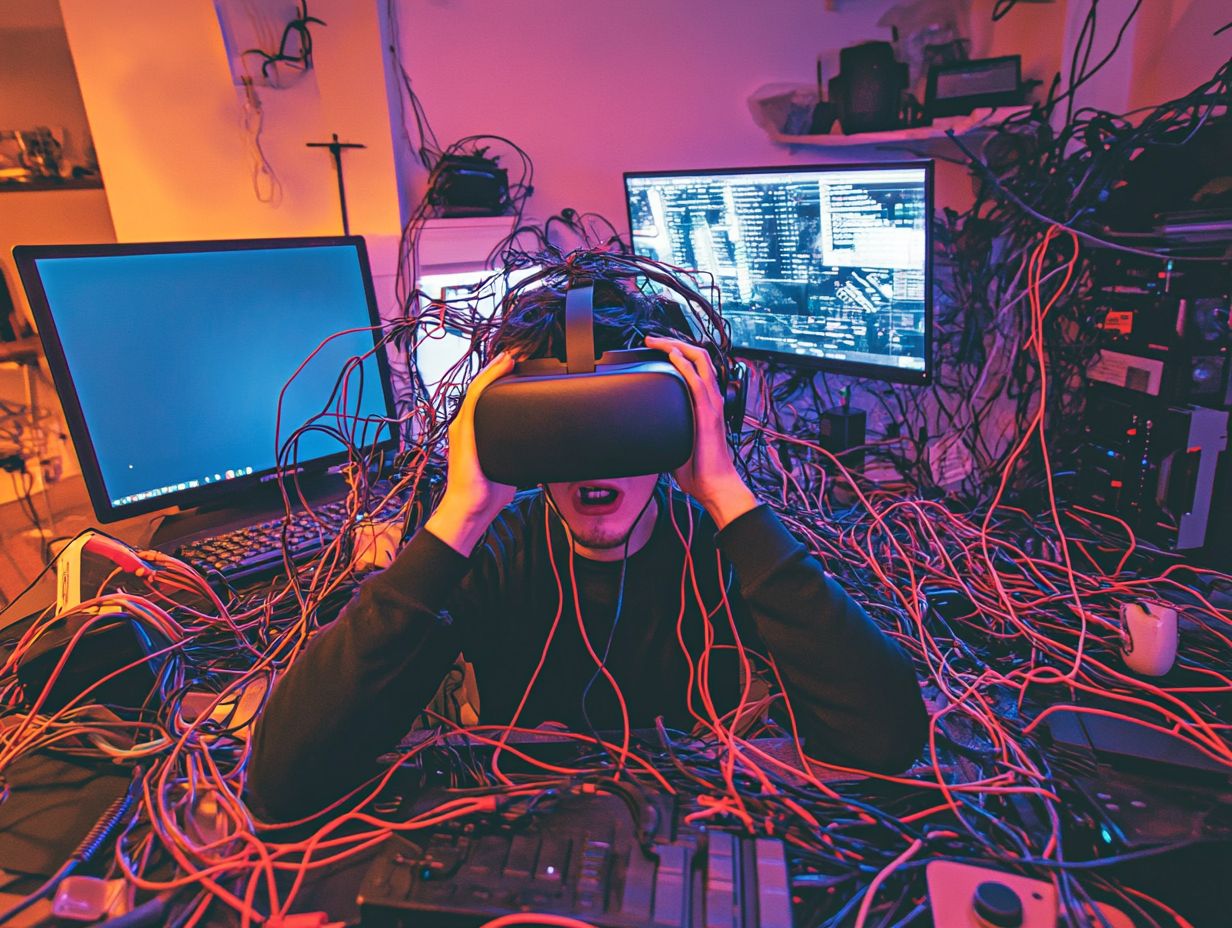
-
What are the top 5 VR setup mistakes to avoid?
The top 5 VR setup mistakes to avoid are: incorrect room lighting, improper placement of sensors, not properly adjusting interpupillary distance (the distance between your eyes), incorrect headset calibration, and not updating software and drivers. For more insights on achieving the perfect setup, consider creating an immersive VR environment: tips.
-
How does incorrect room lighting affect VR setup?
Incorrect room lighting can negatively impact the VR experience by causing glare or reflections on the headset or controllers. This makes it difficult to see the virtual environment clearly.
-
Why is proper placement of sensors important in VR setup?
Proper placement of sensors is crucial for an accurate and immersive VR experience. If the sensors are not placed correctly, tracking errors may occur, causing glitches or lag in the virtual environment.
What is IPD and Why is it Important in VR Setup?
IPD, or interpupillary distance, measures the distance between your eyes. Adjusting it correctly enhances your VR experience by ensuring the virtual world feels natural and comfortable.
Why is Headset Calibration Necessary in VR Setup?
Headset calibration aligns the visuals and tracking properly. Without it, you might experience motion sickness and unnatural movements in VR.
How Often Should I Update Software and Drivers for My VR Setup?
Regular updates are crucial for peak performance and compatibility of your VR system. Aim to check for updates at least once a month.
Importance of Proper Sensor Placement
Proper sensor placement is vital for an accurate and immersive VR experience. If positioned incorrectly, you may encounter tracking errors, leading to glitches or lag.
